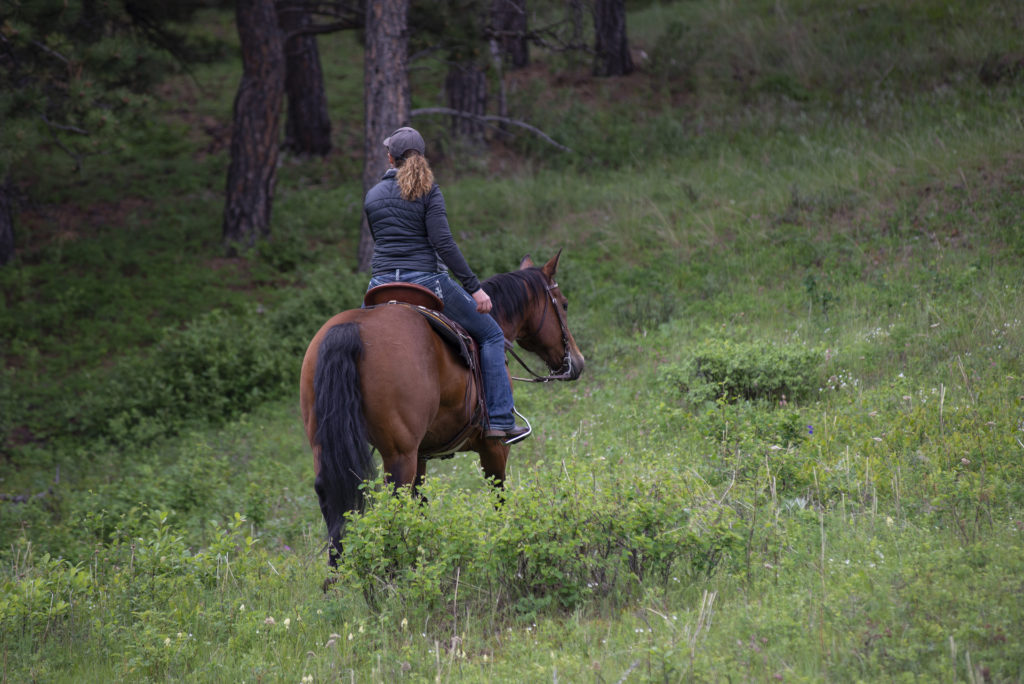Home > Horse Care > What every horse needs after colic surgery
What every horse needs after colic surgery
- October 11, 2023
- ⎯ Christine Barakat
Horses who undergo a program of abdominal strengthening exercises after colic surgery may resume work more quickly and perform better when they return to competition, according to research from Michigan State University (MSU).
Recovery from colic surgery can be particularly difficult for horses because of the unavoidable damage done to the abdominal muscles, explains Sue Holcombe, VMD, MS, PhD. “Colic surgery requires an abdominal incision, usually through a layer of fibrous tissue called the linea alba,” she says. “Surgical incisions are traumatic and alter the function of skeletal muscles.”
Click here to read about research into athletic accomplishments after colic surgery.
To address these healing challenges, Hillary Clayton, BVMS, PhD, and Narelle Stubbs, a professor of physiotherapy, developed a series of exercises to strengthen a horse’s core and back muscles that became the foundation for the MSU’s core abdominal rehabilitation exercise (CARE) program.
Starting 30 days after colic surgery, the CARE program calls for four weeks of in-hand strengthening work. The horses are asked to do several exercises including lumbar “lifts,” in which a handler uses finger pressure along the midline to encourage the horse to raise and tighten his topline, and limbering exercises in which the horse is asked to move his chin to his chest, knees, fetlocks and withers.

The MSU researchers sought to determine the efficacy of this CARE program, especially in helping horses return to work and competition faster, potentially with improved performance.
The owners of horses who underwent exploratory colic surgery at the MSU veterinary hospital between 2008 and 2017 were given the option of following the CARE program. Those who opted in received an instructional manual, DVD and exercise schedule. Horses who survived one year after surgery were eligible for inclusion in the study and their owners were contacted for follow-up. All of the CARE horses completed the entire protocol without complications.
A total of 62 horses were used in the study: 11 were CARE-protocol horses and 51 were control horses who did not perform the exercises after colic surgery.
In addition to reviewing each horse’s medical records, the researchers sent owners or trainers a survey asking about the horse’s postoperative care and progress. Questions included how long the horse was on stall rest after colic surgery as well as the number of days between surgery and initiation of work under saddle, resumption of full training and return to competition.
Respondents were also asked whether the horse’s performance one year after surgery had improved, was similar to or had declined compared to pre-surgery performance.
The data showed that the CARE horses returned to work under saddle more quickly—within an average of 60 days—compared to control horses who returned to work in 90 days. In addition, the CARE horses returned to full training in 75 days, while the control horses resumed full training in 120 days. Finally, nine of the 11 owners of CARE horses reported that their horses’ performance improved after surgery; by comparison only four of 51 owners of the control horses reported an improvement in performance post-surgery.
These results suggest that a CARE-type protocol may be beneficial not only after surgery but during any recovery that requires long periods of rest. “Stall rest for horses is likely similar to bed rest for people,” Holcombe says. “Exercise and movement is key to health. The CARE program described and tested in this study used easily performed exercises to strengthen the core and back of the horse. Horses requiring box stall rest for musculoskeletal injuries could perform this program daily to maintain or enhance core and back strength and flexibility.”
Reference: “The effect of core abdominal muscle rehabilitation exercises on return to training and performance in horses after colic surgery,” Journal of Equine Veterinary Science, April 2019
Don’t miss out! With the free weekly EQUUS newsletter, you’ll get the latest horse health information delivered right to your in basket! If you’re not already receiving the EQUUS newsletter, click here to sign up. It’s *free*!





